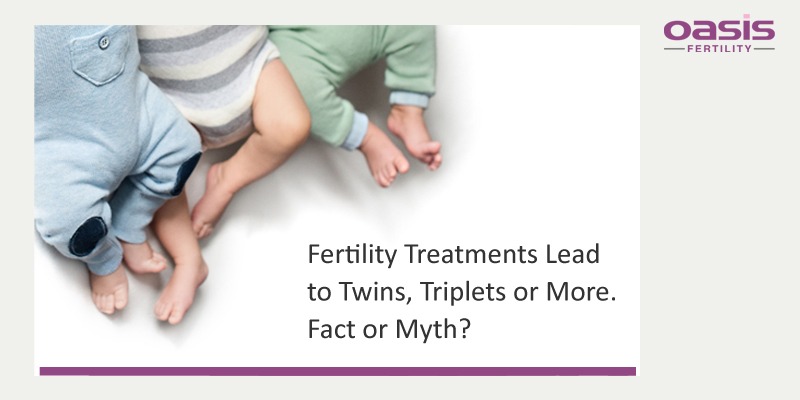Oasis – Fertility treatments lead to twins

Fertility treatments lead to twins, triplets, or more
Multiple births are very common in pregnancies achieved with fertility treatments. More babies are born as twins, triplets, quadruplets, or more using assisted reproductive technology such as IVF than naturally. Across ages, the chances of having multiple pregnancies using IVF are around 30 percent. A large majority of these end up being twins. The odds heavily depend on the number of embryos transferred in IVF and the number of eggs released during ovulation in IUI. While the number of eggs released in IUI cannot be controlled, the number of embryos transferred in IVF can be.
Chances of having twins of multiples through IUI
The procedure of IUI is not what causes the increased chances of having multiples. The drugs that prepare the mother for the procedure might be the reason. Drugs like Clomiphene citrate and letrozole are prescribed to stimulate ovulation. These drugs are given to help the woman produce more eggs to ensure that at least one of these would fertilize and lead to a successful pregnancy. If more than one egg is released and fertilized and implanted, it may lead to multiple gestations. Gonadotropins like the follicle-stimulating hormone can also result in twins or multiples.
Chances of multiples through IVF
While drugs also play an important part in increasing the odds of having multiples through IVF, it is the number of embryos that are transferred that determines the chances of having multiples. When two or more embryos are transferred and implanted, they will lead to pregnancy with fraternal twins. Even if a single embryo is transferred, it can split into two and grow as identical twins. The chances of the latter happening are too little.
Risks of carrying multiples in a pregnancy
Carrying multiples in pregnancy can be risky irrespective of if they were conceived naturally or via fertility treatments. The risks associated with multiples in pregnancy include low birth weight, premature birth, spontaneous abortion, stillbirth, preeclampsia, and placenta previa. The babies born as multiples also risk having birth defects and cerebral palsy though it is seen rarely. These risks are much higher for multiples than singletons born through fertility treatments. If the baby is premature or has a low birth weight, it can lead to a set of other health risks. The risks also depend on the background biology of the parents.
Is single embryo transfer the best way to avoid the risks?
Prominent medical institutions recommend going for single embryo transfer in an IVF cycle because multiple pregnancies pose a plethora of risks for both the mother and the babies. But many still go for multiple embryo transfers for various reasons like to increase the chances of a successful pregnancy, to avoid increased expenses, and to decrease the emotional toll. Most of the patients wish to have three or more embryos transferred. Each cycle of IVF can be expensive and the patients wish to become pregnant in one try. But with today’s improved technology ensures that the success rates of a single embryo transfer and multiple embryo transfers are more or less the same.
Talk to your Oasis Fertility Specialist to know more about the chances and risks of having multiple pregnancies.








